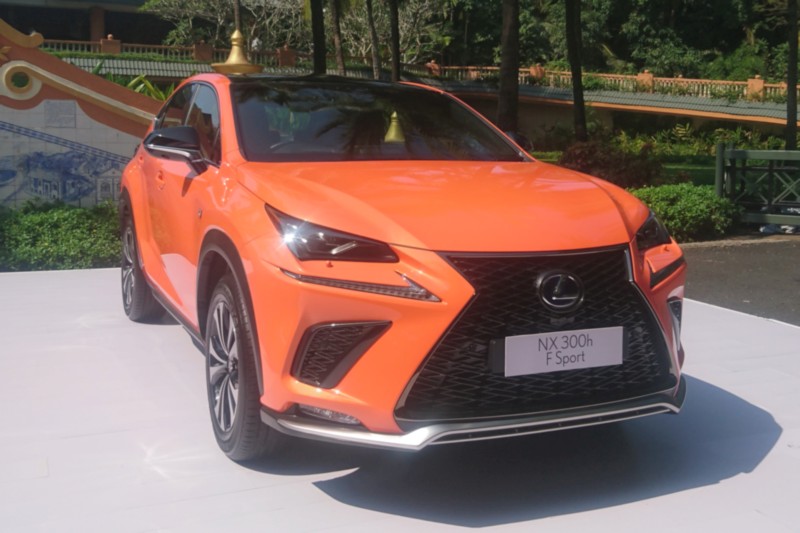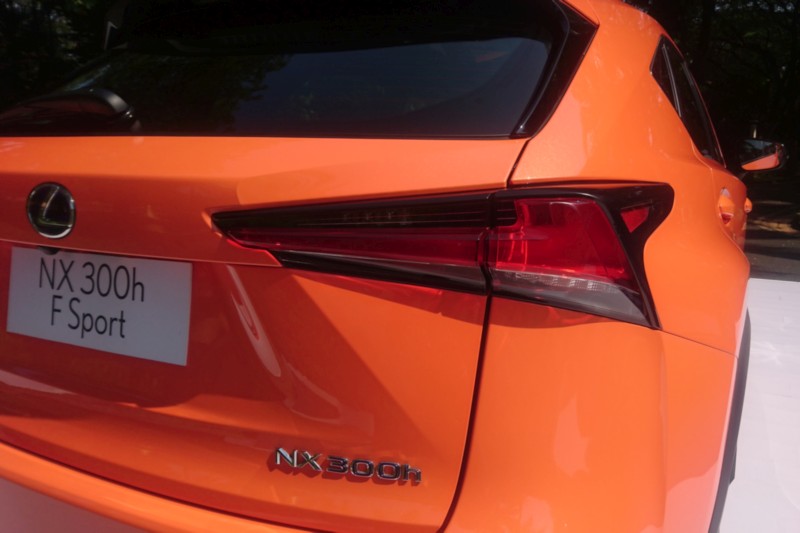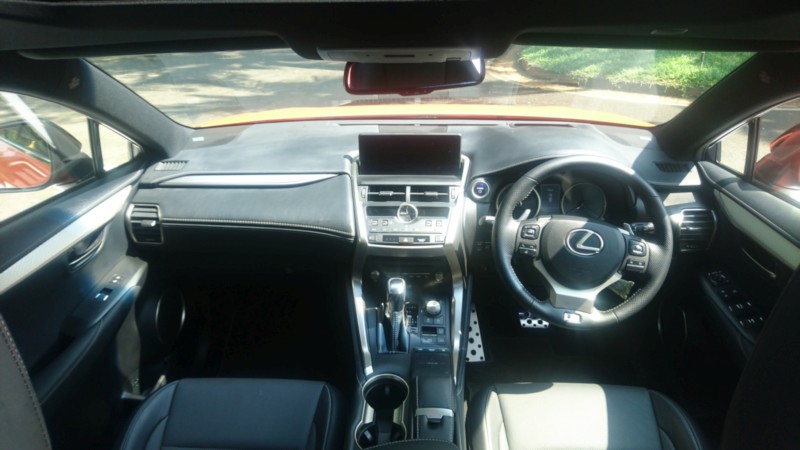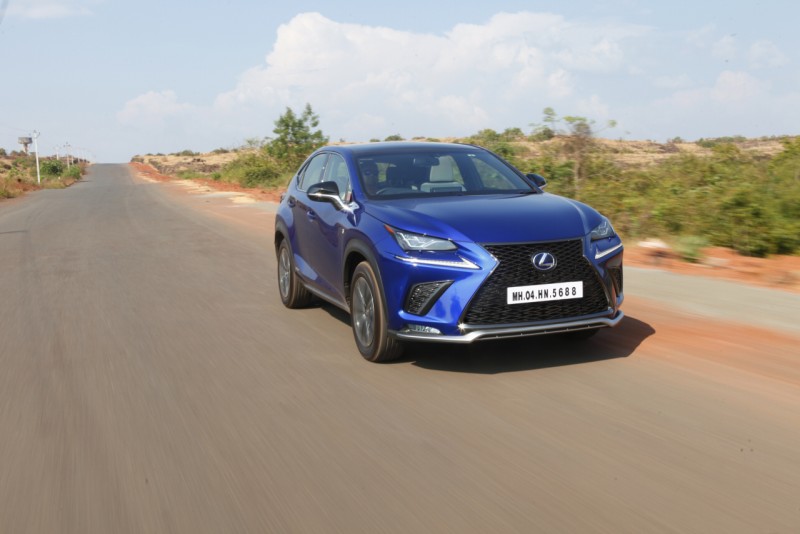Lexus have introduced their fourth model in the India portfolio, the all-new NX 300h luxury crossover SUV, to disrupt the cliché. We take it around Goa to see what it’s made of.
Story: Jim Gorde
Photography: Jim Gorde & Sanjay Raikar
Lexus may only have arrived recently in India, but their brand presence and awareness is far too well established to be considered ‘newcomers’ to the luxury segment. Their LX full-size luxury SUV, the LS luxury saloon, and even the IS convertible have been spotted time and again on Indian roads across several cities. Their halo product, the LFA, powered by a naturally-aspirated high-revving V10, set enthusiast pulses racing and won many hearts with its incredible performance; even featuring in the ‘Fast and Furious’ franchise. The brand, then, is no stranger to anyone.
Lexus’ India chapter began with the trio of the ES sedan, RX crossover SUV, and the LX large SUV. Now, though, comes their fourth offering, and the most compact one yet: the NX 300h, a mid-size luxury crossover SUV. It’s still quite a large offering and will take on some big, established names. It’s styling is sharp enough to almost literally carve a space for itself as well as a piece of the segment.
Introducing the NX, then, is no difficult task. The name comes from ‘nimble’ and ‘cross’ and also points it out as a next-generation vehicle. The 4.64-metre long crossover looks like the ideal weapon for the company to attack the segment with. A segment that includes the Mercedes GLC-Class and the Jaguar F-Pace, yes, but the Audi Q5, Volvo XC60, and BMW X3 have been here for a while, and have their next versions all set to arrive very shortly. These are the names the Lexus NX will have to contend with, but it is an outstanding car, and in more ways than one.
Lexus, doubtless, will have the hybrid card to play, so the pricing will be premium. The NX 300h is being offered in two trim levels: Luxury and F-Sport. Subtle differences between the two – the front grille design, the chrome accents, and the wheel finish – tell them apart. Common equipment for both are the glowing ‘L’ badge, the 18-inch alloy wheels with 225/60 rubber, the all-LED three-way headlamps, LED daytime light strips below the lamps, sharp-looking black-masked LED tail-lamp clusters, and a large panoramic glass roof. Forming a part of the cabin, comprised of top-notch bits and quality fit and finish, are the perforated leather seats, 10.3-inch display with integrated entertainment, communication and navigation, a 14-speaker Mark Levinson premium audio system, a centre console with a touch interface, and wireless charging capabilities.
There are quite a few differences between the Luxury trim and the F-Sport we have here, one of them being the seats. The front seats are sportier in the F-Sport than those in the former, but lack ventilation for both and heating for the rear seats, whereas the 60:40 split rear seat-back is power folding in the Luxury, and manual in the F-Sport trim. The abundance of storage spaces, some quite detailed and well thought-out, make it feel like a smartly designed contemporary interior. The large windscreen and even larger laminated and infrared-reflective panoramic glass roof add to the airy cabin. The trim detailing: aluminium in the F-Sport, with a choice of wood finishes in the Luxury, accentuate their respective intents. The F-Sport also gets a unique soundtrack in Sport and Sport+ modes, with a rorty engine note played through the speakers that hopes to raise its sport quotient. While there may be differences, some subtle and some not so, what is common is the hybrid driveline powering them.
Comprised of a combustion engine and three electric motors; one acting as a starter/generator, one at the front and another at the rear, the NX 300h packs adequate go. The 2.5-litre petrol engine makes 155 PS and 210 Nm, and drives the front wheels through an electronic continuously variable transmission (ECVT), with the rear electric motor kicking in when four-wheel drive is required; situations where more traction is demanded such as starting off, going up a steep gradient, or tackling undulating, uneven, or low traction surfaces. The combined output is 197 PS. The official net peak torque figure is undisclosed.
What that means is that it’s a refined performer when driven calmly, the ECVT picks a rev-band and goes for it, changing ratios to maintain speed and momentum. That’s how it’s meant to be driven. It’s soft and responds well, with the suspension soaking up all the bumps save for the deepest of unruly pot-holes. Over the tarmac, then gravel, then dirt, then broken tarmac again, the NX handled itself in a calm and composed manner. The seating position is quite high, but there’s enough room at the front. However, the sloping roof means that the rear doesn’t afford the same kind of headroom, but that shouldn’t be a problem with children or young adults seated there. It’s not a tight fit by any standard, rather, a little snug, to put it very bluntly.
How is it when pushed? Well, let’s just say that’s not its strongest point. It’s a hybrid, and it weighs 1.9 tonnes, and that means it was meant to be clean and as efficient as possible. It remains vastly front driven, running on electric power as much as possible, which, we’re told, is about five km or so. The combustion engine only kicks in to charge the battery pack and drives the front wheels in tandem with the more potent e-motor. Put your foot down hard, and the engine revs up with the transmission setup leading to a drone at high revs. Not something you really want to hear. Ease off, and all is good again. Fuel efficiency is a claimed 18+ km/l. During the drive, easy and hard, on and off the road, with city traffic and some open stretches, we saw glimpses of around 12 km/l. Not too bad given its weight and size.
Whatever it is, it’s perfectly okay. It’s a truly relaxing car to drive and it, quite simply, pampers you with its spot-on ergonomics, comfortable seats, and extensive equipment list. If you don’t want to win traffic-light sprints and attack corners, and wish to spend your time on the road isolated from the outside, the NX 300h needs a long closer look.
Need to Know: Lexus NX 300h F-Sport
Price: Rs 55.58 lakh (ex-showroom) (Rs 53.18 lakh for the Luxury trim)
Engine: 2,494 cc, in-line four, petrol
Max Power: 155 PS @ 5,700 rpm
Max Torque: 210 Nm @ 4,200-4,400 rpm
Transmission: E-CVT, front-wheel-drive
Battery Pack: 204-cell, N/A Ah
E-Motors: Three, permanent-magnet, one starter/generator, one each front and rear
Transmission: Front- and rear-wheel drive
Net Peak Output: 197 PS
Weight: 1,896 kg




























Leave a Reply